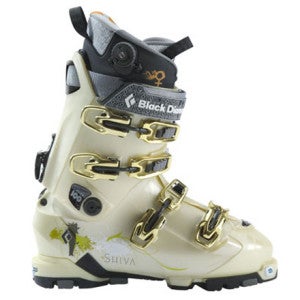It's been years since I bought my first alpine touring set-up, and I'm long overdue for an upgrade. So this season I set about testing all sorts of equipment in search of the perfect quiver. Step one: boots. I tested four pairs: the Black Diamond Shiva, Scarpa Diva, Dynafit Gaia, and Garmont Luster, which are the respective companies' premier aggressive women's AT models with Dynafit compatibility.
First off, a huge thank you to the guys at in Durango for helping me heat mold all these boots. If you happen to pass through southwestern Colorado and need some gear or beta, give them some love.
Here are a few things to know about buying boots:
1. Spring is a great time to buy because deals abound and everyone else is already thinking golf. (More corn for the rest of us!)
2. Fit is paramount, and each boot company has a different last. Try on a bunch of brands to figure out which fits your foot and leg in terms of width, volume, and height.
3. Assess your needs. Boots tend to have trade-offs: If they're both light and stiff, they might not be that comfortable. If they're super comfy, they might be a bit heavy. Take a good look at your uses—are you going to be doing long traverses between huts? (Go with lighter and less stiff.) Yo-yoing off the road on day trips? (Stiffer and potentially heavier.) Then purchase accordingly.
4. Get your boots thermo-molded. No excuses.

The only problem with its cushy liner and stiff ski mode, however, is that it winds up being heavy for a touring boot: more than 8 pounds per pair, in fact. That, of course, is far lighter than typical alpine boots but tends toward the heavier end of the spectrum for alpine touring boots.
The summary: The Shiva accommodates a wide variety of feet, it's aggressive enough for regular resort wear, but it was the heaviest boot tested. It would make an excellent one-boot quiver for backcountry beginners looking to take it in and out of bounds. It's also a great choice for those with finicky feet and badass skiers who don't mind an extra pound or two if it means excellent downhill performance.
—